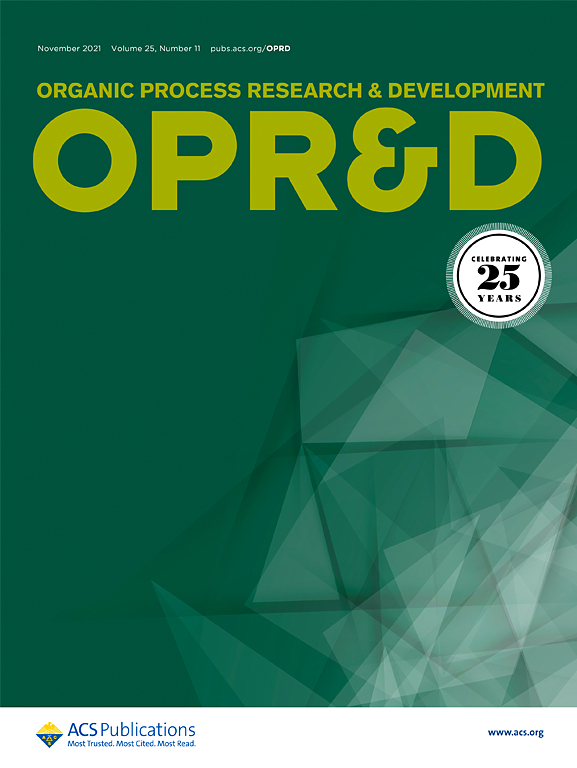Impact of Reactant Dissolution in the Kinetics of a Catalytic Hydrogenation for the Production of Argatroban
IF 3.1
3区 化学
Q2 CHEMISTRY, APPLIED
引用次数: 0
Abstract
An experimental study was performed for a fed-batch catalytic hydrogenation for the production of Argatroban. The penultimate expensive and scarcely available intermediate is characterized by a slow dissolution rate that evolves in parallel with the reaction process. The study investigated the coupling between the reaction and dissolution kinetics. In these circumstances, the standard Area Percentage method in HPLC was found to be misleading, requiring calibration and then absolute peak area measurements to correctly identify the dissolution rate and thus the actual chemical kinetics. Experiments quantified the role of the temperature, stirring rate, and catalyst loading. Shifting from 40 to 80 °C reduced the batch time by 58%, although higher temperatures promoted the formation of undesired impurities. Stirring rate controlled the initial reaction phases when reagent dissolution is critical. Catalyst loading is key in reducing batch time. The increase in catalyst loading was proved to affect the reagent dissolution rate, by increasing the collision frequency between reagent and catalyst particles. A refined first-principles model, incorporating the effect of the catalyst amount on the dissolution mass transfer coefficient, significantly improved the accuracy of dissolution predictions and enabled better identification of the intrinsic reaction kinetics. The addition of a microkinetic description further improved the predictions of intermediates and products.

求助全文
约1分钟内获得全文
求助全文
来源期刊
CiteScore
6.90
自引率
14.70%
发文量
251
审稿时长
2 months
期刊介绍:
The journal Organic Process Research & Development serves as a communication tool between industrial chemists and chemists working in universities and research institutes. As such, it reports original work from the broad field of industrial process chemistry but also presents academic results that are relevant, or potentially relevant, to industrial applications. Process chemistry is the science that enables the safe, environmentally benign and ultimately economical manufacturing of organic compounds that are required in larger amounts to help address the needs of society. Consequently, the Journal encompasses every aspect of organic chemistry, including all aspects of catalysis, synthetic methodology development and synthetic strategy exploration, but also includes aspects from analytical and solid-state chemistry and chemical engineering, such as work-up tools,process safety, or flow-chemistry. The goal of development and optimization of chemical reactions and processes is their transfer to a larger scale; original work describing such studies and the actual implementation on scale is highly relevant to the journal. However, studies on new developments from either industry, research institutes or academia that have not yet been demonstrated on scale, but where an industrial utility can be expected and where the study has addressed important prerequisites for a scale-up and has given confidence into the reliability and practicality of the chemistry, also serve the mission of OPR&D as a communication tool between the different contributors to the field.

 求助内容:
求助内容: 应助结果提醒方式:
应助结果提醒方式:


